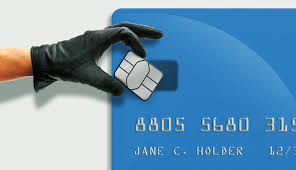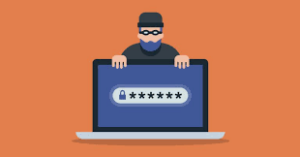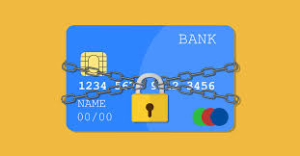Fraud and scams have been around for ages, but with the rapid evolution of technology, those with ill intentions now have an array of methods at their disposal to try and siphon off your hard-earned money. Understanding the strategies they employ is essential for safeguarding yourself and your finances.
Should you believe you’ve fallen prey to a scam or fraudulent activity, it’s crucial to act promptly.
Recognising Fraud and Scams: A Guide
When it comes to protecting yourself from fraud, there isn’t a universal solution that fits everyone. However, we’ve compiled a series of practical tips that can enhance your ability to identify and steer clear of scams.

Before committing to any payment, especially if it involves a substantial amount, take a moment to pause and reflect. It’s wise to consult someone you trust—be it a close friend or family member—before proceeding.
Be vigilant when you receive warnings during the payment process; they are designed to help you navigate banking safely and avoid falling victim to scams.
Remember that impersonation is alarmingly easy; scammers can cleverly disguise their caller ID, email addresses, or names to mirror those of legitimate individuals. Therefore, if you receive any communication via email, text, or phone call, it’s prudent to verify its authenticity by contacting the person or organisation back using a known and reliable number.
Never rush through payment processes without performing additional checks. Taking the time to ensure that the recipient and the transaction are legitimate can make all the difference. This may involve reading reviews, researching businesses or websites, and confirming that the individual or entity is who they claim to be.
Exercise caution regarding remote access requests. Scammers might urge you to click on dubious links or download applications that grant them control over your device, which could lead to serious consequences.
If you feel uneasy or suspect that you may have engaged with a scam email or text message, or if you’ve inadvertently shared your personal information with the wrong people, don’t hesitate to reach out to us first at 0330 9 123 123 or 0800 313 4321 (toll-free). Additionally, reporting the incident to Action Fraud at 0300 123 2040 is vital.
Understanding Social Engineering
Social engineering is a deceptive practice that can occur in person, online, or over the phone. Its insidious nature often leaves victims unaware that they are being manipulated, as criminals employ advanced tactics to achieve their goals. These tactics may involve instilling fear, creating panic, or even fostering a sense of friendship to gain trust.
Through social engineering, these unscrupulous individuals can compel you to take actions you wouldn’t normally consider. Being aware of these manipulative strategies is key in defending yourself against such threats. Stay informed and vigilant, for knowledge is your best weapon against deception.
In a world where technology intertwines with our daily lives, the unsuspecting often find themselves vulnerable to those who prey on their trust. One of the most insidious acts that can occur is the unintentional sharing of private or sensitive information with someone whose intentions are far from honourable. This phenomenon is a hallmark of social engineering, a deceptive practice that manipulates individuals into revealing confidential details without realising they are interacting with a criminal.
Consider, for instance, the method known as remote access. In this scenario, an individual masquerading as a legitimate technician or support agent persuades you to relinquish control of your device. They may suggest downloading seemingly harmless applications like AnyDesk or TeamViewer, or they might coax you into clicking on a link that appears benign. Once you’ve granted them access, thecanto view everything on your screen and navigate through your files.
The objective behind these remote access scams is clear: the perpetrator seeks to pilfer your funds or gain entry to your financial records. By deceiving you into granting them this access, they exploit your trust for their malicious ends. It is crucial to remember that you should never allow anyone to take remote control of your device unless you have thoroughly verified their identity and established a sense of trust. Even if you do decide to share access, be cautious—never open any banking applications or websites during this time. Granting remote access effectively hands the other party the keys to your digital kingdom, allowing them to observe and manipulate your every action.
Among the various tactics employed by social engineers, phishing, smishing, and vishing stand out as some of the most prevalent methods. Phishing typically occurs through emails, while smishing involves deceptive text messages, and vishing refers to misleading phone calls. Criminals have become adept at crafting messages that lo ok authentic and delivering convincing narratives over the phone. Our strong recommendation is to refrain from responding to any requests without first verifying their legitimacy. For further guidance on how to report fraudulent activities, we encourage you to explore our dedicated resources.
ok authentic and delivering convincing narratives over the phone. Our strong recommendation is to refrain from responding to any requests without first verifying their legitimacy. For further guidance on how to report fraudulent activities, we encourage you to explore our dedicated resources.
As we navigate through a landscape riddled with deceit, it’s essential to recognise the myriad forms of scams and fraud that exist. There are countless variations, each with its cunning approach. To assist you in understanding these threats better, we have compiled a collection of informative links detailing the different types of scams.
One particularly notorious example is the HMRC scam. In this scheme, criminals impersonate representatives from Her Majesty’s Revenue and Customs, attempting to elicit urgent payments from unsuspecting victims. They may send messages claiming outstanding tax bills or enticing offers for rebates. At the same time, they employ pressure tactics that threaten legal repercussions, such as court action or police involvement, should you fail to comply promptly.
It’s worth noting that these criminals can contact you at any time throughout the year, so vigilance is key. The digital age has opened new avenues for nefarious activities, making it imperative for individuals to remain alert and informed about the risks associated with sharing personal information online. Stay safe, and always prioritise verification over impulse when faced with requests for sensitive data.
How to Safeguard Yourself Against Scams
Imagine receiving a call out of nowhere, and on the other end is someone claiming to be from HMRC. They speak with authority, perhaps even threatening you with police involvement or court proceedings. In that moment, it’s crucial to remember one golden rule: never make any payment to HMRC based solely on such unexpected contact. Instead, take a deep breath and verify what you owe directly through the official GOV.UK website.
It’s also wise to approach any number displayed on your caller ID with scepticism. Scammers are skilled at manipulating this information—a tactic known as spoofing—to make it appear that they are legitimate officials. Always remain cautious and never succumb to pressure when it comes to divulging personal or financial information. A key point to keep in mind is that HMRC will never notify you about tax refunds or rebates through email.
Now, let’s shift gears and delve into a different yet equally concerning realm: romance and friendship scams. Picture this scenario: a stranger reaches out, claiming they want to befriend you or develop a romantic connection. These con artists often create elaborate fake profiles online, sometimes adopting the identities of real individuals, such as military personnel stationed overseas or professionals working in foreign lands.
They can be incredibly patient, spending weeks or even months building a façade of trust, or they might move quickly, ensnaring you in their web almost instantly. Once they feel they’ve established a connection, they will concoct a tale that tugs at your heartstrings, asking for your assistance with a personal crisis—perhaps claiming they need help with unexpected travel expenses or mounting hospital bills. They may even invoke sympathy by telling you that a loved one is gravely ill and needs funds for medical care.
So, how can you shield yourself from falling prey to such schemes? The first rule is simple: never send money to anyone you haven’t met face-to-face. Always approach any unexpected outreach with caution, mainly if it includes red flags that raise your suspicions. Remember to detach your emotions from the situation; scammers are adept at exploiting feelings of compassion and urgency.
When engaging in online friendships, it’s essential to scrutinise the authenticity of the person behind the profile. You can conduct a reverse image search on popular web search engines to verify whether their profile pictures have been lifted from someone else’s account. This small step could save you from potential heartbreak and financial loss.
Finally, maintain a healthy scepticism toward any requests for money. Resist the urge to send cash, share sensitive security information, or provide copies of important documents without thorough verification. By staying vigilant and informed, you can protect yourself from the clutches of deceitful individuals who seek to exploit your kindness and trust.

In the ever-changing landscape of finance, investment scams have become increasingly prevalent, showcasing the lengths to which criminals will go to deceive unsuspecting individuals. These con artists employ a range of sophisticated and aggressive tactics designed to lure you into committing your hard-earned money to investments that are nothing more than elaborate hoaxes.
Imagine this: you receive a message on social media from a company that is offering incredible investment opportunities. You may have stumbled upon them during a casual Google search, or they may have contacted you out of nowhere. With promises of substantial returns in a remarkably short period, they skillfully weave a narrative that can easily lead even the most cautious individual astray. Their persuasive abilities are striking, making it difficult to see the red flags waving in the background.
So, how can you protect yourself from falling prey to these schemes? Here are some key warning signs to keep an eye out for when evaluating potential investment opportunities:
First, be wary of unsolicited communication. If you receive an unexpected email, message, or cold call promoting an investment opportunity, proceed with caution. It’s important to note that cold calling to sell shares or investments is illegal, and this should raise immediate suspicion.
Next, beware of enticing “limited time only” offers that pressure you into making hasty decisions without adequate time to evaluate the investment thoroughly. Scammers often employ this tactic to create a sense of urgency that clouds your judgment.
Additionally, pay attention to the sales tactics being used. If you encounter someone who is overly aggressive or persistent in their approach, it’s a clear indicator that something may be amiss.
Another red flag involves company names that sound familiar but feature subtle alterations. These so-called “clone companies” often mimic legitimate firms registered with the Financial Conduct Authority (FCA) in an attempt to appear credible.
Finally, if a company encourages you to keep your investment confidential to maximise your returns supposedly, consider this a significant warning sign. Transparency is crucial in any legitimate investment scenario.
To help combat these fraudulent schemes, the FCA has developed a resource called ScamSmart. This online tool serves as a valuable ally for consumers seeking to discern whether an investment opportunity is genuine or a scam. By utilising ScamSmart, you can verify if the company you’re considering investing with is regulated by the FCA and determine if it may be one of those deceptive clone operations. However, remember that it’s essential for you to conduct your due diligence. This means verifying that the contact numbers provided match those listed with the company and reaching out directly using verified contact information to confirm their legitimacy.
Staying safe in this complex world of investments requires vigilance and discernment. Here are some steps you can take to safeguard your finances:

1. Investigate thoroughly. Always check the FCA register to ensure that both the investment opportunity and the company are appropriately regulated.
2. Avoid falling for clones and impostors. Only use contact details sourced from the FCA register to make sure that you’re interacting with a legitimate and registered organisation.
3. Maintain control over your decisions. Don’t let pressure dictate your financial choices; take your time to assess all information before proceeding.
By arming yourself with knowledge and remaining alert to potential scams, you can navigate the investment landscape with confidence and avoid becoming another victim of financial fraud. In a world where deception is rampant, staying informed is your best defence.
Understanding Purchase Scams: A Cautionary Tale
In the vast and ever-evolving landscape of online shopping, where convenience often reigns supreme, there lurks a shadowy underbelly—purchase scams. Imagine this: you stumble upon a captivating ad on social media, or perhaps you’re browsing a legitimate-looking website, only to find an irresistible deal that seems too good to pass up. Unbeknownst to you, the person behind that enticing offer is not a reputable seller but a cunning criminal, meticulously crafting an illusion of authenticity.
These deceitful schemes can manifest in various forms. Picture yourself yearning for a dream vacation, concert tickets for your favourite band, or even essential building materials for a home project. You eagerly click to purchase, excitedly entering your payment details, only to discover that once the transaction is complete, the seller vanishes without a trace. The goods you anticipated may never arrive, or worse, you could receive something entirely different from what was promised—a heartbreaking twist to your online shopping adventure.
But it’s not just buyers who fall prey; sellers can also be ensnared in these traps. Let’s say you decide to sell an item online. You package your goods with care and send them off, expecting payment in return. Instead, you find yourself in a precarious situation where payment never arrives. In another scenario, you might receive a check that exceeds the sale price. The scammer will then urge you to wire back the excess funds or forward them to a so-called ‘shipping agent,’ leaving you in a financial quagmire.
Now, how can one discern these devious plots? Although these criminals are skilled at weaving their webs of deceit, certain red flags can serve as your guiding light. For instance, if an item is listed at an unusually low price, it should raise eyebrows—after all, if it sounds too good to be true, it probably is. Pay attention if the seller seems overly eager to communicate and rush the sale; this could be a tactic to trap you into acting impulsively.
Another warning sign occurs when a buyer sends you more than what’s necessary for the transaction and asks for the difference to be returned. Exercise caution if an unknown seller insists on using the ‘PayPal Friends & Family service or requests payment via bank transfer, as these methods often lack buyer protection.
Platforms like Facebook Marketplace offer a convenient avenue for local buying and selling but come with their oisks. If you encounter an item that you can’t physically inspect, be wary; the seller may be hiding behind a fabricated profile, increasing the likelihood of falling victim to a scam.
So, how can you safeguard yourself in this digital marketplace? Even if everything appears legitimate, it’s wise to take certain precautions. When purchasing from established sites like eBay, Airbnb, or Autotrader, adhere strictly to their recommended payment procedures. Utilise secure payment options whenever available—PayPal for goods purchases or credit/debit cards can provide an added layer of security.
In this age of online commerce, staying vigilant is paramount. By arming yourself with knowledge and awareness of these scams, you can navigate the bustling world of online shopping while minimising your risk of becoming another victim in this cautionary tale. Remember, it’s better to be safe than sorry in your quest for that perfect purchase.

In the world of finance, a shadowy underbelly exists where deceitful individuals go to great lengths to impersonate trustworthy figures, all in a sinister bid to pilfer your hard-earned money. These con artists are skilled actors, weaving elaborate tales designed to convince you of their legitimacy. They might reach out with alarming news—claiming that your funds are in jeopardy and urging you to transfer them to a “secure” account. However, heed this warning: if someone ever instructs you to relocate your money for safekeeping, recognise it for what it is—a blatant scam.
These criminals thrive on fear, painting a picture of imminent danger to your finances. Their persuasive tactics may leave you feeling anxious and uncertain, but it’s crucial to remain vigilant and protect yourself with a few straightforward guidelines.
First and foremost, remember that no reputable institution, including us, will ever ask you to transfer your money under the guise of security. If you encounter such a request, it’s a clear sign of fraudulent activity. Furthermore, these scammers may even encourage you to fabricate stories or mislead us. If you find yourself in such a situation, stop immediately and reach out to us—we’re here to assist you.
Before taking any action in response to a communication, verify the identity of the person on the other end. Contact the organisation using a trusted phone number, one that you’ve either used before or found on its official website. If you receive a call from your bank, know that dialling 159 is your safest option. This secure line will connect you directly to your bank without any risk of interception.
Now, let’s delve into another facet of these scams: invoice fraud. Picture this scenario: you receive an invoice that seems legitimate at first glance. It might appear as though a contractor or service provider has sent it your way, but behind the scenes lurks a criminal mastermind who has either hacked into their email system or crafted an elaborate ruse via a direct message.
These fraudsters often trick unsuspecting victims into changing payment details for services rendered or upcoming charges. Their messages usually carry an urgency that pressures you into making hasty decisions. Before you know it, your payment is funnelled directly into the hands of these unscrupulous individuals.’

So, how can you protect yourself from falling victim to such schemes? The first red flag to watch for is poor grammar and spelling errors within the correspondence. Additionally, be wary of any requests that deviate from your routine payment procedures. If an invoice arrives in your mailbox on official letterhead, scrutinise it closely for minor inconsistencies—perhaps a shift in font style or alterations in standard payment information.
Another tactic these criminals employ involves subtly modifying email addresses to create the illusion of authenticity. You might receive a message from someone you believe you know reasonably, only to discover later that their account has been compromised or spoofed.
The key takeaway here is vigilance. Trust your instincts and always double-check before proceeding with any financial transaction. In this digital age, where impersonation can be just a click away, staying informed and cautious is your best defence against these cunning scams.
The Tale of SIM Swapping and Identity Theft
In a world increasingly connected by technology, where our lives are often at the mercy of our devices, a sinister act known as SIM swapping lurks in the shadows. Picture this: a cunning criminal, with malice in their heart, manages to convince your mobile service provider to issue them a new SIM card linked to your number. With that simple yet nefarious act, they gain access to your mobile banking messages, leaving you vulnerable and unaware. Your original SIM card is swiftly deactivated, and all your essential communications are rerouted to the thief’s device, putting your financial security at risk.

Fortunately, some companies, like Santander, have taken strides to combat this menace by developing award-winning technology designed to detect SIM swapping attempts. Yet, even with such advancements, vigilance remains essential. You must be alert to any signs that could indicate an encroachment on your mobile security.
Among the warning signals to heed are:
– An unexpected text message notifying you of a SIM transfer that you did not initiate.
– An unusual loss of connection when you’re in an area where service is typically strong.
– Your phone displays alarming messages such as ‘invalid SIM’ or ‘no SIM’.
If you experience any of these unsettling occurrences, contact your mobile provider immediately—just ensure you use a contact number sourced from their official website.
To safeguard yourself against this type of fraud, consider adopting these protective measures:
– Establish a robust password with all your phone service providers.
– Safely dispose of any documents that contain sensitive information, such as phone bills.
– Opt for online billing whenever possible instead of receiving paper statements.
– Keep your phone powered on at all times; being aware of its functionality can help you detect issues promptly.
But the threats don’t end there; another shadowy figure looms—identity theft. This pervasive crime impacts countless individuals, often leading to devastating consequences. Criminals can exploit just a handful of your details to open fraudulent accounts, claim benefits in your name, or apply for official documents—all without your consent. These actions can create a trail that ultimately leads back to you.
Beware of the following signs that may suggest you’ve fallen victim to this insidious act:
– A sudden halt in receiving your mail, such as statements or bills that used to arrive regularly.
– Signs that your trash has been rummaged through, indicating someone is searching for personal information.
– Unfamiliar bills appearing in your name.
– Erratic Direct Debits or transactions popping up on your account without explanation.
To shield yourself from identity theft, take these steps:
– Shred any sensitive documents rather than discarding them in the trash or recycling bin.
– Be wary of emails requesting personal information; legitimate organisations will never ask for such details via email.
– Think carefully before divulging personal information to anyone.
– If you change your residence, ensure your mail is redirected to prevent sensitive information from falling into the wrong hands.
– Utilize online bank statements instead of waiting for printed ones in the mail.

Now, if you ever suspect that your personal or account information has been compromised, take immediate action: cancel your card or freeze your account without delay. Should you find yourself no longer receiving mail, inform the companies involved and check with Royal Mail to confirm that no unauthorised mail redirection has been set up.
If a mysterious transaction appears on your statement—one that raises suspicion—don’t hesitate to call the helpline at 0800 092 3300 for assistance.
For those who have endured the trials of identity theft, obtaining a copy of your credit file is crucial. This document serves as a key to uncovering any unauthorised applications made in your name. Scrutinise it for new accounts or credit inquiries that you did not sanction—these can indicate attempts at impersonation. Remember, it’s the responsibility of data holders to maintain accurate records; any unauthorised inquiries should be disputed and removed from your credit file.
In this digital age, where our identities are often just a click away, staying informed and vigilant is our best defence against those who would seek to exploit our trust.
Money Mules: A Cautionary Tale

In a world where crime lurks in the shadows, there exists a sinister practice known as using money mules. These unsuspecting individuals are recruited by criminals to facilitate the transfer of ill-gotten funds from one account to another. The methods of recruitment are as varied as they are deceptive; criminals might reach out through social media platforms or even linger near schools and universities, waiting for the opportune moment to strike up a conversation. With a web of cunning stories, they ensnare their targets, enticing them into unwittingly moving stolen money under pretences. This elaborate scheme serves a singular purpose: to obscure the origins of the stolen cash.
A Word of Warning
It is crucial to understand that your bank account is a personal asset meant solely for your use. Allowing anyone else to access your account can lead to dire consequences. If you find yourself involved in the activities of a money mule, be prepared for a harsh reality. Your bank may take drastic measures, including blocking or closing your account. Any funds you receive in exchange for your assistance will likely be reclaimed.
Furthermore, the fallout doesn’t end there; you may struggle to open new bank accounts, which could hinder your job prospects or ability to secure rental housing. Additionally, obtaining loans or mobile contracts might become an uphill battle. Most alarmingly, you could be held accountable for the total amount that flowed through your account and may even face criminal charges.
Understanding Card Fraud
As we delve deeper into the realm of financial crime, we encounter the dark world of card fraud. This type of deception occurs when criminals steal your credit or debit cards or acquire your card information to unlawfully siphon off your funds. You might first become aware of this betrayal when you notice unfamiliar transactions on your bank statements or suddenly discover that you’ve exceeded your overdraft or credit limit.
One form of this fraud is known as card-not-present (CNP) fraud, where a criminal utilises stolen card information to make purchases online, over the phone, or via mail order. Then there’s counterfeit card fraud, which involves the illegal reproduction of your credit or debit card. This often happens through a method called skimming; a criminal uses a device attached to an ATM or card reader to capture the magnetic stripe data from the back of your card. They can then transfer this stolen information onto a fake card and use it for their nefarious purchases.
Another alarming aspect is lost and stolen card fraud, where a physical debit or credit card is either misplaced or taken and subsequently used by a thief. Card ID theft adds another layer to this complexity, where criminals obtain personal details beyond just card numbers—such as your name and address—to gain control of a card account in your name.
ATM Fraud: The Hidden Threats
When it comes to ATM (cash machine) fraud, several tactics are employed that can catch even the most vigilant users off guard. Card entrapment involves a device that physically captures your card while card skimming again rears its ugly head as details from your card are illicitly collected. In a more distressing scenario known as cash entrapment, criminals may install devices on cash dispensers designed to seize the cash you withdraw.
Digital Card Fraud: A New Era of Deception
In our increasingly digital world, we also face the threat of digital card fraud. This occurs when transactions are made using the contactless feature on credit or debit cards or through digital wallets like Apple Pay or Google Pay. While contactless payments typically have a £100 limit per transaction, digital wallet transactions can often exceed that threshold, presenting new opportunities for fraudsters.
Advance Fee Scams: A Final Warning
Among these various forms of deception lies another perilous trap: advance fee scams. These scams lure victims into paying upfront fees with the promise of receiving something valuable in return—often leading to nothing but loss and disappointment.

Awareness and caution are your best defences against this intricate web of financial crime. Stay vigilant and protect your financial well-being from those who seek to exploit trust and innocence.
In the shadowy world of financial deception, one particularly insidious tactic stands out: advance fee scams. Imagine a scenario where you receive an enticing offer—perhaps a loan that promises to ease your financial burdens. But here’s the catch: the scammer demands that you pay a fee upfront, cloaked under various guises. You might be told this is an ‘administration fee’ needed to unlock funds, or perhaps it’s a deposit for a dream accommodation that exists only in their imagination.
Consider the allure of a lucrative investment opportunity, where a fee is requested to release your promised earnings. Or picture yourself having fallen victim to a previous scam, only to find yourself targeted again by someone claiming they can help you recover your lost funds, but only after you pay yet another fee. The scenarios can continue: being asked to pay for uniforms or background checks before even receiving a job contract or needing to part with cash to claim lottery winnings you never even entered for.
These scammers are clever, using various methods to reach out—email, text messages, phone calls, or social media platforms. They may even mix these communication channels to craft an illusion of trustworthiness. It’s crucial to remain vigilant and consider how you can verify the legitimacy of the person or organisation making these requests.
To safeguard yourself from such treachery, it’s wise to follow some guiding principles:
1. When seeking credit, always turn to reputable companies. Steer clear of those who ask for upfront fees for releasing funds.
2. Before proceeding, read reviews and conduct thorough checks on any company; don’t take everything at face value from job advertisements.
3. Reflect carefully on any request that involves making an advance payment.
4. Be cautious when applying for jobs via social media; stick to reputable job websites instead.
5. Never pay fees to claim winnings from contests or lotteries, especially if you haven’t entered any.
6. Avoid paying employers before starting your position; legitimate companies won’t require this.

7. Lastly, never hand over deposits for rental properties until you’ve seen them firsthand and have a formal tenancy agreement in place. Always work with trusted agencies to prevent potential issues.
Another prevalent scam involves WhatsApp impersonation. Imagine receiving a message from someone you love dearly—a family member or close friend—only to discover that it’s not really them at all. The message comes from an unfamiliar number claiming their phone is broken or lost and urgently requesting money for a new device or an unexpected bill.
These criminals are adept storytellers, weaving narratives designed to spur you into action without requiring you to think critically about the situation. They want you to act swiftly, without pausing, to verify whether the plea for help is genuine.
Before sending any money, always take a moment to contact the person in question directly—either face-to-face or by calling their known number. That brief pause for reflection could be what saves you from losing your hard-earned money.
And then there’s the lurking threat of digital wallet fraud. As we navigate our increasingly cashless society, the convenience of digital wallets has made them a target for nefarious actors seeking easy prey. Protecting yourself in this evolving landscape is as essential as ever. Always be cautious about sharing your information, and monitor your accounts regularly for any signs of unauthorised access.
In this age of rapid technological advancement and increasing connectivity, vigilance is your best defence against the myriad of scams that seek to exploit your trust and goodwill.

The Rise of Digital Wallet Scams
In recent times, there has been an alarming increase in fraudulent activities involving popular payment platforms like Apple Pay and Google Pay. These scams enable criminals to gain access to unsuspecting individuals’ card information through their digital wallets. To help you stay vigilant and secure, we’ve compiled some straightforward tips that can shield you from becoming a victim of such fraud.
A Cautionary Tale:
Meet Jane, an everyday shopper who enjoys the convenience of online deals. One day, she comes across an enticing advertisement on social media promoting a limited-time sale from a reputable company. Intrigued by the discounts, she decides to indulge herself with a purchase. As part of the process, Jane inputs her usual card details, feeling confident in her choice.
However, the website prompts her to verify the transaction by entering a One-Time Password (OTP). Without a second thought, she follows the on-screen instructions and completes her order, blissfully unaware of the danger lurking behind the scenes.
The Hidden Truth:
What Jane doesn’t realise is that she has unwittingly provided her card and personal information to a cleverly disguised fraudulent site. This sensitive data was quickly seized by a scammer, who then added Jane’s card to their digital wallet. The OTP that Jane received wasn’t meant for her intended purchase; instead, it was a tool for the criminal to register their digital wallet using Jane’s information. As a result, the scammer now has free rein to make purchases with Jane’s card without her knowledge.
Protecting Yourself: Steps to Take
To ensure you don’t fall prey to similar schemes, here are some essential precautions you can implement:

1. Scrutinize OTP Messages: Always take the time to read the entire message containing your OTP. It should clearly indicate its purpose. If the content of the message doesn’t align with what you were expecting, halt any further action and reach out to us immediately.
2. Disable AutoFill Features: Adjust your device settings to prevent the automatic entry of codes like OTPs without first reviewing the complete message. This simple step can give you an extra layer of security.
3. Conduct Your Research: Don’t solely rely on social media ads for authenticity. Take the initiative to investigate the company yourself. Visit their official website directly to confirm any sales or promotions. If they’re legitimate, those offers will be prominently displayed there, too.
4. Beware of Follow-Up Scams: Once a criminal has access to your details, they can use this information for more sophisticated and costly scams. They may impersonate your bank or even law enforcement authorities. If someone reaches out to you claiming that you need to transfer your money for safekeeping, recognise it as a scam.

By remaining alert and informed, you can significantly reduce your risk of falling victim to digital wallet fraud. Stay safe, and always prioritise your financial security!
Maxthon
In an age where the digital landscape is constantly shifting and online interactions can change in the blink of an eye, safeguarding personal safety while exploring the vast expanse of the internet has never been more critical. The intricate web of connections that make up our online experience necessitates a careful choice of web browser—one that prioritises security and privacy above all else. Amidst a sea of competing options, the Maxthon Browser stands out as a beacon of reliability, addressing these pressing concerns without imposing any costs on its users. This advanced browser comes equipped with an impressive array of built-in tools, including a powerful ad blocker and various anti-tracking features—essential elements designed to fortify your online privacy.

Maxthon has carved out a unique niche in the crowded browser marketplace, driven by a commitment to providing a user experience that prioritises safety and confidentiality. With an unwavering focus on shielding personal information and online activities from myriad threats lurking in the digital shadows, Maxthon employs a suite of practical strategies to safeguard user data. By harnessing cutting-edge encryption technologies, this browser ensures that sensitive information remains protected and confidential throughout every online endeavour.
When it comes to enhancing privacy during your digital journeys, Maxthon truly excels. Every aspect of this browser has been meticulously designed with features intended to bolster your privacy. From its effective ad-blocking capabilities to comprehensive anti-tracking measures and a dedicated incognito mode, these tools harmoniously work together to eliminate intrusive ads and thwart tracking scripts that could disrupt your browsing experience. Consequently, users are afforded a greater sense of peace as they traverse the internet. The incognito mode further enhances this feeling of security, allowing individuals to explore with increased confidence.
As you embark on your online adventures, you can trust that Maxthon is there to support you, ensuring that each click and scroll is met with the utmost protection. In this ever-evolving digital realm, where threats may arise unexpectedly, having a reliable companion like Maxthon by your side makes all the difference. You can navigate the complexities of the internet with reassurance, knowing that your privacy is not just an afterthought but a priority embedded within every feature of this remarkable browser.
